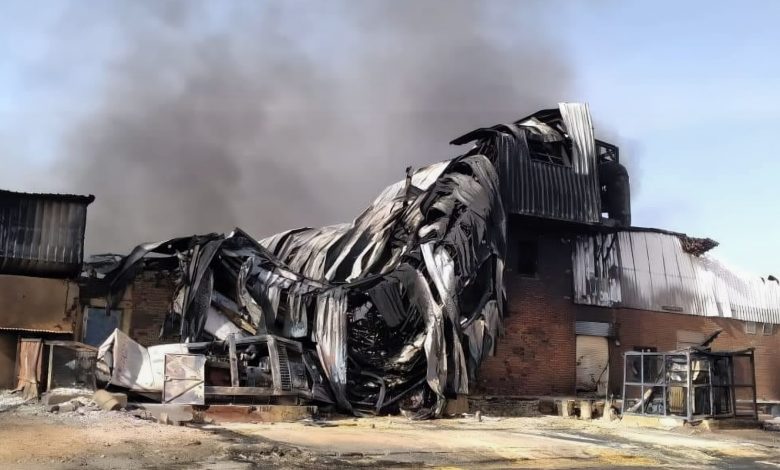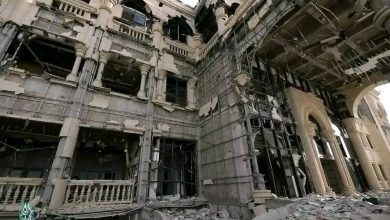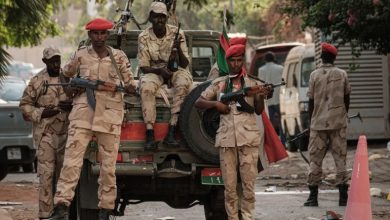Reports
An Investigation Reveals Shocking Details About the Destruction of Industrial Facilities in Sudan

By: Alawia Mukhtar
Thousands of factories have been completely or partially destroyed, with some reduced to rubble, halting production in the capital Khartoum and several states that witnessed military operations. Meanwhile, industrial activity has fluctuated in safer states following the outbreak of war in Khartoum in mid-April last year.
This destruction, which has affected about 90% of industrial facilities according to the Ministry of Industry’s estimates, has pushed millions of workers in the sector to the brink of poverty.
One of those affected is Mohamed Kamel, who lost his prestigious job at a major factory in Khartoum. The war cost him his sole source of income, forcing him and his family into destitution. Initially resorting to begging in the early days of the war, he later managed to secure a temporary livelihood by selling phone credit at a bus station in Dongola, where he sought refuge and lived in a shelter. His story mirrors those of countless others who lost their jobs and now struggle for daily sustenance after previously enjoying stable livelihoods.
An Ambitious Plan
The Federal Ministry of Industry announced ambitious plans to revive the industrial sector and boost the national economy.
Industry Minister Mahasin Yaqoub told Al-Sudani that the ministry developed a post-war plan to distribute industrial facilities across states based on each state’s comparative advantage. She highlighted comprehensive coordination with state governments to support factories establishing branches in safer areas by offering necessary facilities.
Yaqoub stated that 90% of factories in war-affected states have been destroyed, describing the damage as catastrophic. She noted the collapse of industrial zones in Khartoum, Gezira, parts of Sennar, and White Nile states, with products and raw materials ruined and workers displaced.
She revealed specific figures, citing 3,193 small and medium factories damaged in Khartoum, along with 126 large industrial facilities in Gezira and 3,131 small factories. The ministry, she explained, has focused on utilizing the industrial capacity of safe states to offset lost production.
This effort has replaced many imports, with 43 oil presses in various states covering 70% of local oil consumption and 13 mills meeting 77% of daily flour demand. Additional mills under construction are expected to fully meet domestic flour needs, eliminating reliance on imports.
The minister added that production has resumed in several sectors, including food, iron, plastics, cement, and paints. Measures have also been implemented to ensure continued cement production and other vital industries critical for reconstruction.
Before the war, the Ministry of Industry estimated that the industrial sector contributed approximately 17% of the gross domestic product. Despite a decline in recent years—with 40% of factories, including textile plants, ceasing operations due to various challenges—the sector remained a cornerstone of the national economy.
A Mountain of Rubble
Ashraf Salah Nur al-Din, former Secretary-General of Sudan’s Industrial Chambers Union, emphasized that the devastation extended beyond conflict zones to industrial facilities in safer states, which experienced significant production declines due to supply chain disruptions and market instability.
He lamented the destruction of decades of progress, with industrial and commercial establishments—some over 70 years old—reduced to rubble by the war. Nur al-Din estimated the losses in the sector at $10–15 billion, encompassing buildings, machinery, and infrastructure.
He stressed that rebuilding the industrial sector must begin with broader economic recovery, a challenging task requiring substantial resources. He also underscored the need for international and regional support to revive the sector, particularly in Khartoum, as it hosts the largest population concentration.
Despite concerns about the flight of foreign investments, Nur al-Din expressed confidence in retaining local capital if the state implements incentive measures to attract fleeing investments back.
A Bleak Reality
Nur al-Din painted a grim picture of factory owners, many of whom have become displaced, refugees, or impoverished survivors of the war. He highlighted the challenge of securing funding and infrastructure to rebuild the industry, emphasizing the central role of the state in post-war recovery efforts.
Incentives for Recovery
Economic expert Mohamed al-Nayer described the industrial sector’s destruction as the most severe among all economic sectors, attributing it to the concentration of factories in Khartoum.
He warned against repeating the strategic mistake of centralizing industry in the capital and urged the government to invest in infrastructure, particularly energy, in all states to empower both local and foreign private sectors to rebuild.
Al-Nayer argued that it is possible to attract investments even amid ongoing conflict by focusing on safer states and engaging interested nations. He expressed optimism that fleeing capital would return, provided the government encourages investment and implements policies for modern, sustainable industrial development.
A Starting Point
The recovery process began with Northern State Governor Abidin Awad announcing plans to establish a pharmaceutical manufacturing city in Dongola and approving the construction of 13 factories in the state.
Source: Al-Sudani



